Author: Alex Liu, Foresight News
EigenLayer announced the launch of the token EIGEN last night and will conduct a "Stakedrop" airdrop. Currently, EIGEN is quoted at 9.94 USDT on AEVO, corresponding to nearly $16 billion in FDV. Users who participate in re-staking directly through EigenLayer and holders of LRT can now check the number of airdrops on the official claim website, while participants in DeFi protocols such as Pendle will have to wait until the second phase.
EigenLayer's airdrop is finally here, but it has brought unexpected controversy.
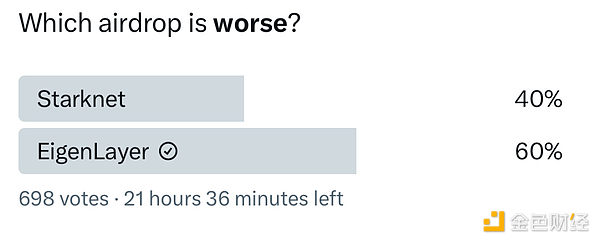
Voting in the community about who has the worse airdrop
The project is attracting much attention
If you ask what is the most watched project this year, EigenLayer, which has set off a wave of "re-staking" on its own, is the undisputed answer in many people's minds. When alt L1s such as Solana continued to be popular and the golden dog meme was flying all over the sky, it was LRTfi based on EigenLayer that stabilized the Ethereum ecosystem and absorbed a large amount of TVL, allowing users to look forward to future excess returns and keep their funds and confidence in Ethereum.
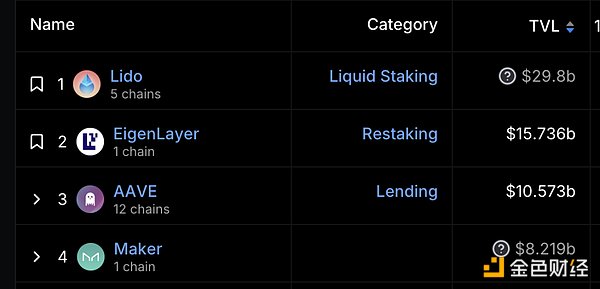
According to DeFiLlama, EigenLayer has nearly $16 billion TVL, ranking second in the entire chain
Many people believe that "EigenLayer will be the largest airdrop this year, or even in history."
But last night, when the Eigen Foundaton X account, domain name, airdrop claim website domain name, Eigen token white paper, and airdrop qualification query function were successively exposed and launched, many people became more and more disappointed and even angry. What happened?
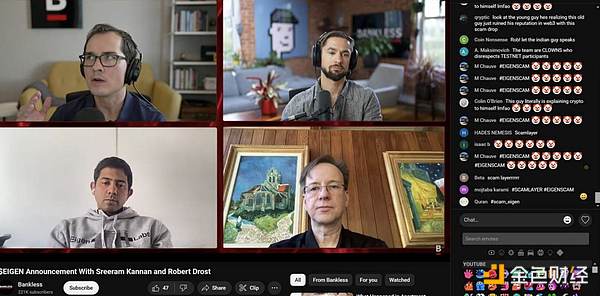
Due to the continuous abuse of users dissatisfied with the airdrop, Bankless, which was live streaming with the founder of EigenLayer, closed the comments
The results are disappointing
Distribution: More VCs and teams, fewer users
From the first deposit opening in June last year to the snapshot on March 15 this year, all re-staking participants who have invested nearly $16 billion in EigenLayer in the past year will share the first quarter "Stakedrop" reward of 5% of the total tokens. At the same time, the combined share of early contributors and investors (i.e. VCs and teams) is as high as 55%.

Newsletter with token distribution details
In the 40-page white paper, such Tokenomics is given, in which the airdrop share in the first quarter is not only lower than some users' expectations, but also lower than the market pricing (LRT-related YT on Pendle plummeted after the announcement), and the community does not seem to buy it - many users said that they only received 10 EIGEN minimum living allowances, and at the same time, the number of tokens was small, and the majority of community members responded that the number was lower than expected.
"Non-transferable" tokens
Yes, it has been officially announced that 90% of the tokens in the first quarter "Stakedrop" can be claimed by pledgers and LRT holders who directly participated in EigenLayer on May 10. But it seems to be useless? Because the tokens cannot be transferred at this time, it means they cannot be sold. The document states: In order to ensure sufficient time for decentralization, the tokens will remain non-transferable.
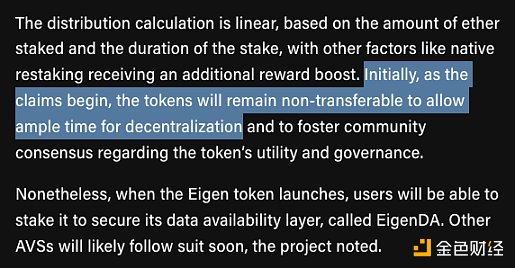 Relevant part of the document
Relevant part of the document
In addition to causing further dissatisfaction in the community, Ethena, which had previously carried out a large-scale airdrop, also posted a message saying: "Our tokens are transferable, we love you." It seems to be a mockery of this matter.
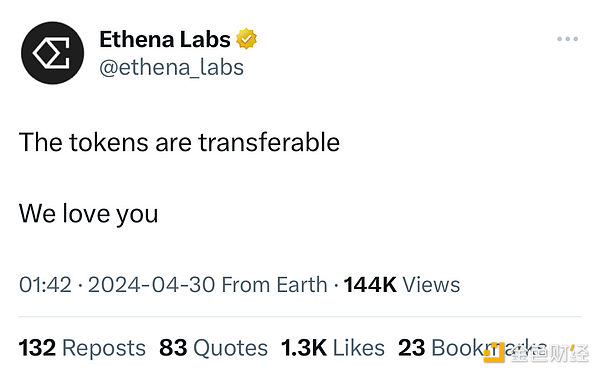
Tweets from Ethena Labs
It is worth noting that someone explained on behalf of EigenLayer that the tokens are temporarily untransferable in order to confirm the share of DeFi users in the first quarter before they are officially launched in the second phase. So whether the criticism on this point is reasonable is debatable.
These people seem to know the snapshot time?
Whenever a project conducts an airdrop, whether someone has inside information and whether there is a so-called "rat warehouse" will definitely become a hot topic. Because this is related to the two most critical standards of airdrops: fairness and transparency. And this time, there seems to be some weird "coincidences".
The snapshot date for the first season’s airdrop was March 15th, and GSR, the “legendary trader” who had made a comeback and posted a post during the sharp drop a few days ago, withdrew his wBETH worth $7 million on March 16th, just one day after the snapshot.

Snapshot date

GSR withdrawal record
This is not a special case. On January 2, this wallet newly funded by Binance deposited about 4,000 wBETH, about $13 million, into EigenLayer. In the next 3 months, it accumulated nearly 3.5 million Eigen points. On March 16, one day after the snapshot, it withdrew all of it.
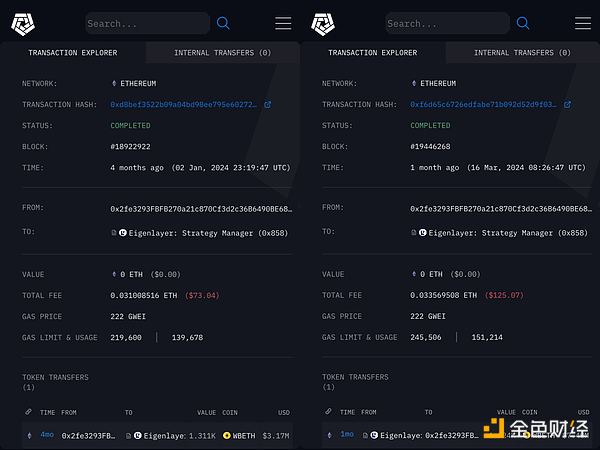
Deposit and withdrawal records of the wallet
Are these people "insiders" with inside information? Some people in the community believed it, and they were very angry.
Strict geographical location blocking

Geographically restricted, unable to open the airdrop page
It is not uncommon to restrict airdrop qualifications based on geographical location, but it often stops at prohibiting the United States and surrounding territories and a few sanctioned countries. EigenLayer's list of restricted countries is definitely long, and the first restricted country written is China.
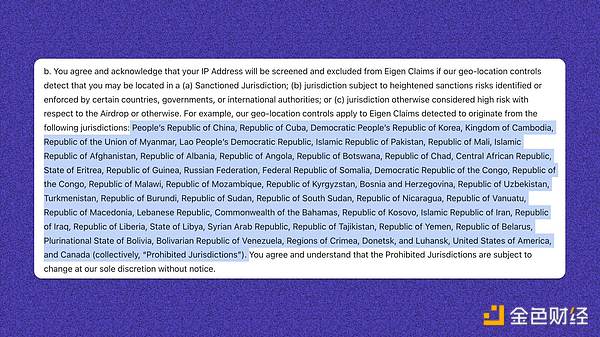
A long list of countries that are prohibited from receiving airdrops
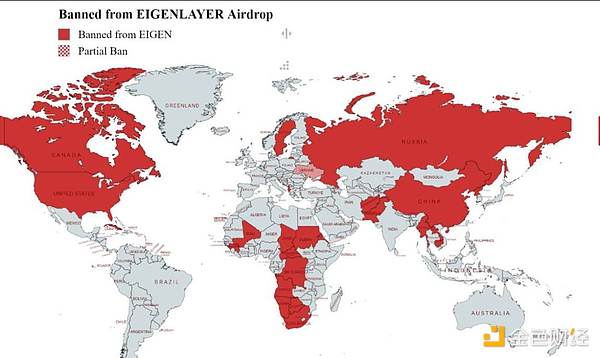
The areas marked in red are areas prohibited by Eigen
In addition, the previous geo-blocking is often superficial. You can still claim tokens normally by using VPNs from other countries. EigenLayer is different. It is "real". The author personally experienced that the proxy that used to be successful was actually detected and blocked. This is the first time it failed. It took a lot of trouble to bypass the geo-blocking and query the share. (Tutorial at the end)
Another point of controversy in the community is: since it has such powerful geographical detection and blocking capabilities, why didn’t it use it when the protocol was opened for deposits, and only enabled it when receiving rewards? Is it because they don’t like it?
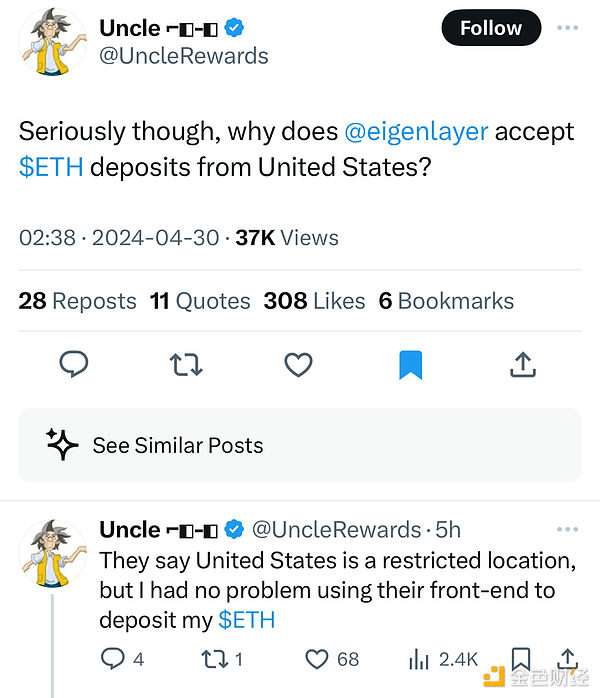
Users complained that the United States was not a "restricted location" when "depositing money"
Tutorial on bypassing geographic blocking to query airdrops

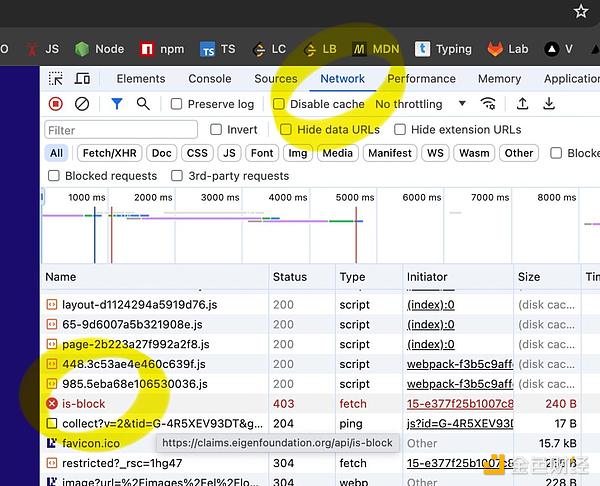
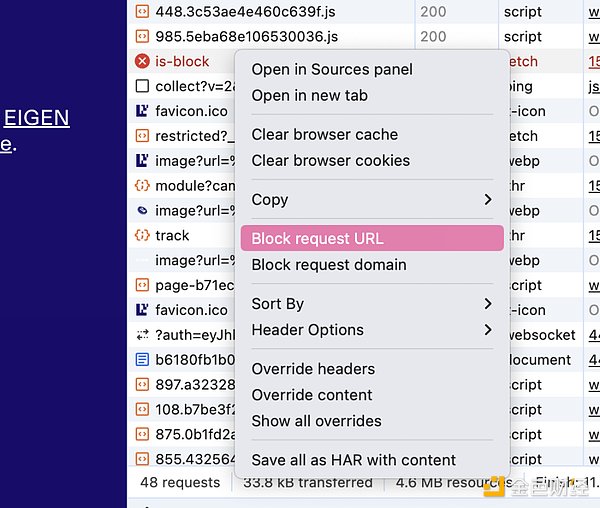
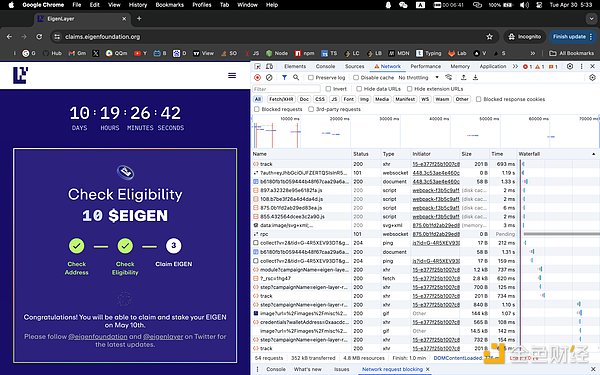
 JinseFinance
JinseFinance





















